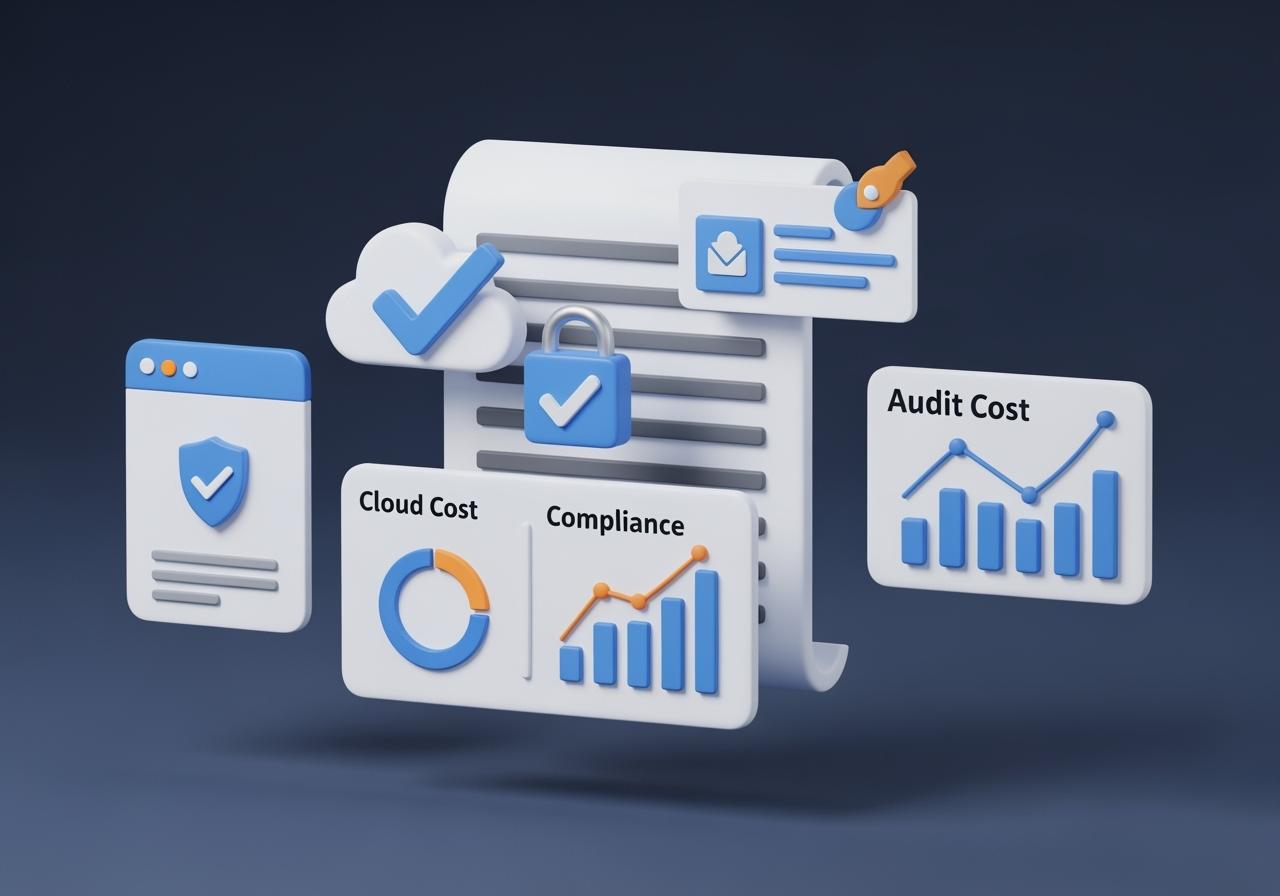FinOps Evidence Is Now a Regulatory Expectation
Auditors increasingly scrutinize cloud financial operations. They want proof that optimizations follow change control, approvals are documented, and data integrity remains intact. CoreFinOps anticipates this demand by generating evidence-ready artifacts for every FinOps workflow. Instead of scrambling at quarter end, teams export curated packages containing everything an auditor needs to evaluate policy adherence.
This capability elevates FinOps from an internal efficiency exercise to a governed program aligned with SOC2, ISO 27001, and emerging regulations. Compliance officers gain confidence, and customers see transparency that differentiates your organization.
Immutable Exports Stored in Secure S3 Buckets
CoreFinOps compiles evidence-including optimization timelines, approval trails, guardrail executions, and ROI ledger entries-into immutable bundles stored on Amazon S3 with object lock. Each export follows a consistent taxonomy, making it easy for auditors to trace a control from policy to execution. Encryption at rest and in transit protects sensitive data, while access is controlled via fine-grained IAM policies.
Exports can be scheduled monthly or generated on demand for specific audits. Teams annotate packages with context, reducing the need for lengthy interviews during assessments. Auditors review authentic logs, not recreated reports.
Signed Manifests Guarantee Integrity
To prevent tampering, CoreFinOps signs each export with cryptographic manifests. The manifest lists included artifacts, timestamps, and checksums. Any alteration invalidates the signature, alerting compliance teams. This tamper-evident design mirrors best practices used in financial reporting and digital forensics, assuring auditors that FinOps evidence is trustworthy.
Signed manifests also support traceability. If multiple departments share evidence, each can verify they received identical data. This transparency builds trust across internal stakeholders and external auditors alike.
Attestation APIs for Seamless GRC Integration
Many enterprises manage audits through GRC platforms. CoreFinOps exposes attestation APIs that push evidence metadata, status updates, and control mappings to these systems. Compliance officers can trigger evidence refreshes programmatically, attach FinOps records to control libraries, and track remediation tasks. The integration eliminates manual uploads and ensures FinOps stays synchronized with broader governance programs.
When auditors request samples, the GRC platform references CoreFinOps artifacts instantly. This orchestration shortens audit cycles and showcases operational maturity.
Role-Based Access Controls and Data Minimization
Evidence often contains sensitive information. CoreFinOps enforces role-based access, ensuring only authorized personnel can view or export data. Sensitive fields can be masked or redacted in public-facing reports. Audit viewers receive just enough detail to verify controls without exposing confidential business metrics. Access events are logged, creating an audit trail of who viewed what and when.
Data retention policies align with regulatory requirements, allowing teams to define how long evidence remains accessible before archival or deletion. Compliance officers gain fine-grained control without building custom tooling.
Automated Control Mapping and Status Dashboards
CoreFinOps maintains a library of compliance controls mapped to FinOps activities-change management, cost allocation, anomaly response. Each evidence bundle references the relevant controls, making it easy to prove compliance coverage. Dashboards show the status of each control, outstanding remediation tasks, and upcoming renewal dates. Compliance teams monitor readiness in real time instead of waiting for annual self-assessments.
When new regulations like DORA or AI governance frameworks emerge, the mapping library expands. CoreFinOps customers receive updates without reengineering their FinOps workflows.
Partnering Compliance and FinOps Teams
The tooling is only part of the story. CoreFinOps fosters collaboration by offering joint playbooks for compliance and FinOps teams. Workshops align on control objectives, evidence expectations, and reporting cadences. ChatProduct, the AI assistant, answers compliance questions and surfaces evidence links instantly. This partnership transforms audits from stressful events into orchestrated checkpoints.
Organizations that embrace evidence-ready FinOps find that compliance ceases to be a bottleneck. Instead, it becomes a proof point for customers and regulators that cloud operations are secure, efficient, and well-managed.
Wrapping up
FinOps success now hinges on credibility with auditors and regulators. CoreFinOps automates the evidence pipeline-immutable exports, signed manifests, attestation APIs-so compliance confidence comes standard.
With audit-ready FinOps, teams spend less time preparing documents and more time delivering savings, innovation, and trust.
